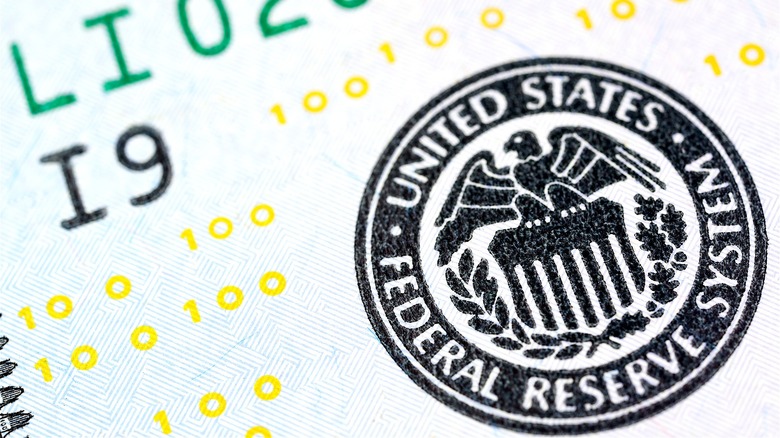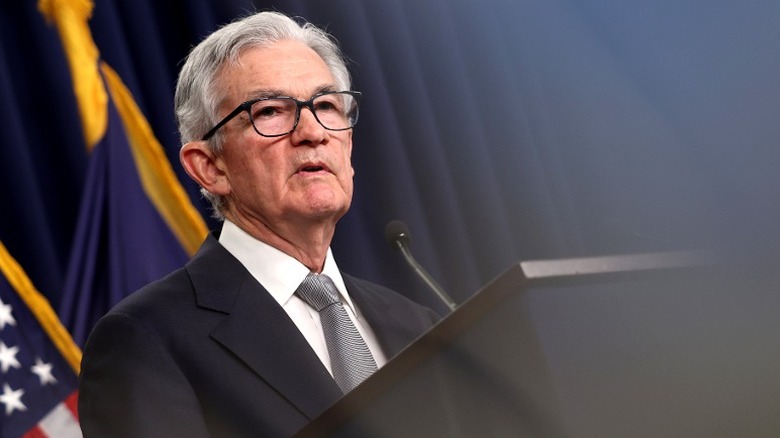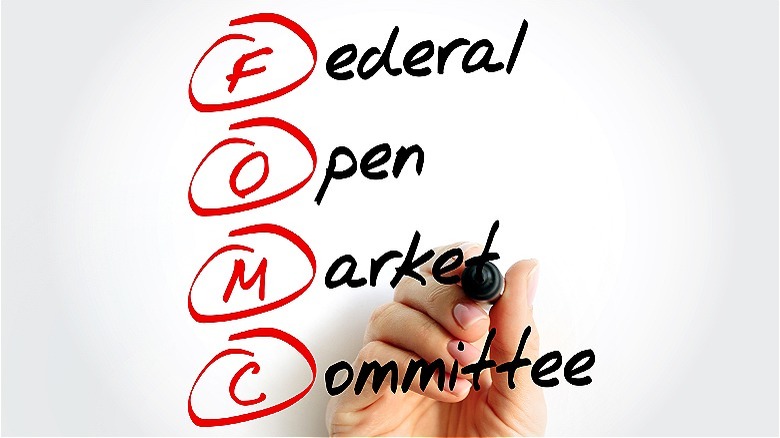What Actually Drives Interest Rates?
There's been a LOT of talk about interest rates lately, especially when it comes to how exactly the Federal Reserve is connected to them. Most attribute interest rate increases to the Fed itself, or even to its chair, Jerome Powell. While this isn't entirely inaccurate, you might be surprised to learn that something known as the Federal Open Market Committee, or FOMC, is what is ultimately behind the country's interest rates. The committee, composed of 12 total members, meets eight times a year to discuss the overall monetary policy of the Federal Reserve, and to vote on any potential changes, like, say, increasing or decreasing the national interest rate.
It's important to realize that FOMC members come from different crucial elements of the overall Federal Reserve System: the Federal Reserve Board of Governors and the Federal Reserve Banks. In this way, the committee combines the public perspective of the Board of Governors (which answers to Congress) with the private corporation perspective of the banks. While these different elements of the Fed each have more specific goals and individual ways of operating, the overall purpose of the central banking system is to promote national economic goals through its direct influence on the availability and cost of money and credit.
This is fueled, in part, by interest rates. Changes in the federal-funds rate can do everything from affecting foreign exchange rates to impacting employment and the cost of goods. (See what the Fed achieving a soft landing means for the economy.)
Who is on the committee?
Understanding who serves on the FOMC requires a general understanding of the Federal Reserve system. For starters, the Fed is an independent governmental entity that serves as the United States' central bank. The system has a board of governors, a board of directors, and the FOMC. The Fed also includes 12 different Federal Reserve districts that each house its own regional Federal Reserve Bank, which operates as an extension of the central bank. These are located in Boston, New York, Philadelphia, Cleveland, Richmond (Virginia), Atlanta, Chicago, St. Louis, Minneapolis, Kansas City, Dallas, and San Francisco. Note, these banks, despite operating as private corporations, are accountable to the Fed's Board of Governors.
Now, as for how this connects to the FOMC. The committee comprises seven members from the Board of Governors and five Federal Reserve Bank presidents. However, one of the Federal Reserve Bank president seats is permanently filled by the president of the Federal Reserve Bank of New York. This is due to the New York Fed's special status, which is solely tasked with conducting domestic market operations for the system. The other four seats, meanwhile, are served on a rotating basis from the other 11 Reserve Banks.
Plus, even though the remaining Reserve Bank presidents have non-voting seats, they generally attend the eight yearly FOMC meetings in order to contribute to the committee's overall discussion and assessment of economic options. Ultimately, the committee must review current economic conditions, as well as assess potential risks, associated with their existing monetary policies.
How the committee affects interest rates
Per the Federal Reserve Act of 1913, the Federal Reserve is responsible for setting the monetary policy of the country as well as regulating its banking institutions. If you're wondering how exactly it controls "monetary policy," it comes down to three distinct tools the Fed is able to control: open market operations, the discount rate, and reserve requirements. The last two tools are handled by the Board of Governors, leaving open market operations to the FOMC. One of the primary ways this occurs is through establishing the target rate for federal funds trading at a given time.
To be more specific, by influencing the demand for (as well as the supply of) depository balances that institutions might hold at Federal Reserve Banks, the FOMC can change the federal funds rate to whatever range it's decided. Since the federal funds rate is determined by calculating the median overnight federal funds transactions by related institutions and entities, curbing or allowing more or fewer transactions will ultimately influence the rate. Note, while the current rate is high in an effort to curb or slow inflation, the FOMC has also lowered the rate in the past when it felt that inflation was too low as a way to stimulate demand in the U.S. economy. (Here's a look at smart savings moves to make with inflation still rising.)
The biggest way this federal funds rate will affect consumers is to impact the cost of borrowing money (aka, taking out a loan). However, it can also impact the interest rates on other products like, say, a high-yield savings account's APY.


